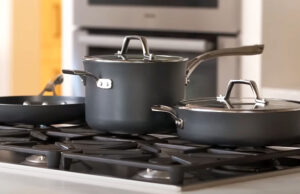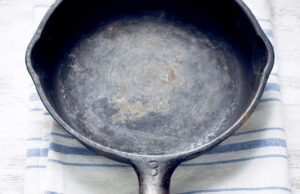As an Amazon Associate, I earn from qualifying purchases at no extra cost to you.
How to Load Your Maytag Dishwasher Properly (Expert Guide)
I remember the first time I tried loading my Maytag dishwasher. Plates were stacked wrong, spoons were everywhere, and somehow the cups didn’t get clean. I wondered, is it really that tricky? Turns out, there’s a smart way to place everything so water reaches every corner. A few small tweaks made a huge difference. Suddenly, I started getting spotless dishes without pre-rinsing. Curious how to do it right? Let’s dive in.
When loading a Maytag dishwasher properly, place larger items like pots and plates at the sides and back, angle them slightly for water to reach all surfaces, put bowls and cups on the top rack facing downward, avoid overlapping utensils, separate silverware types in the basket, check spray arms spin freely, keep plastic away from heating elements, and always scrape food but skip heavy rinsing.
Arrange Plates and Bowls Strategically
Placing plates correctly can feel like a puzzle at first. I used to shove them in any way, hoping they’d get clean. Slowly, I realized angling plates slightly inward lets water spray reach both sides. Mixing large and small plates prevents blocking water flow. Bowls work best when tilted downwards, so water doesn’t pool.
I often place dinner plates at the back and medium ones closer to the front. This setup leaves enough space for smaller items. Oddly shaped bowls sometimes block the water, so I place them carefully in corners. Rotating spray arms need room, or the top rack items may remain dirty.
It’s surprising how small changes make a big difference. One time I ran a load with plates tightly packed. Some spots remained greasy, and I had to redo it. Learning to leave gaps between dishes ensures every surface gets a proper rinse.
Tip: Pretend your dishwasher is a mini washing line. If water can’t touch it, it won’t get clean. Angle plates consistently and check the spray arms before closing the door.
- Place plates at the back and sides
- Tilt bowls downward to avoid water pooling
- Mix sizes to prevent blocking water flow
- Leave space for spray arms to spin freely
Optimize Top Rack Placement
The top rack is tricky for cups, glasses, and small bowls. I once loaded everything upright, and water puddled inside my mugs. Tilting items downward solves this instantly. Cups usually fit better along the sides where spray reaches easily. Plastic containers go here too, keeping them away from the heating element.
I like to alternate items to avoid contact. Sometimes two mugs lean together and trap food residue, which was a surprise when I first noticed. Keeping cups and glasses spaced ensures they stay spotless. Bowls with deep edges benefit from the same trick.
Sometimes I wonder why we even skip this step. It’s tempting to just pile things up, but a little planning saves post-wash wiping. Plastic containers dry slower, so positioning them correctly improves airflow.
Quick tip: If a cup has a handle, face it inward slightly. This exposes the inside to water and detergent more effectively. Over time, these small tweaks add up to perfectly clean top-rack items every cycle.
- Tilt cups downward for proper water flow
- Space items to avoid trapped residue
- Keep plastic away from the heating element
- Alternate items to prevent contact
Load Silverware for Maximum Cleaning
Silverware can be surprisingly tricky. I used to toss all forks, knives, and spoons in the basket together. Some came out greasy, some spotless. Then I noticed Maytag baskets have separate sections. Placing knives and spoons facing different directions prevents nesting. Forks go tines up, spoons down, so water hits every surface.
Mixing silverware types works well too. I put a spoon, fork, knife pattern in each row. This keeps items from sticking together. Oddly, this simple adjustment cut down pre-rinsing time. I remember the first load after changing the pattern—everything came out gleaming.
I also check the basket placement. It shouldn’t block the bottom spray arm. Once, I loaded oversized spoons sideways, and the water couldn’t reach nearby plates. That mistake taught me spacing matters as much as orientation.
Small tip: Shake silverware lightly before closing the door. Sometimes tiny food pieces cling to utensils. This ensures detergent reaches all surfaces, and the result is perfect silverware without scrubbing.
- Separate knives, forks, and spoons
- Alternate directions for better cleaning
- Avoid blocking the spray arm
- Shake lightly before closing the door
Handle Pots, Pans, and Large Items
Heavy pots and pans need careful placement. I used to put them in the bottom haphazardly, and they blocked plates. Angling them slightly toward the center helps water flow underneath. Always avoid overlapping with other large items.
I also learned to keep them away from the spray arm. One time, my biggest pot stopped it from spinning. That load needed a second wash. Even lightweight pans benefit from a tilt, ensuring every surface gets detergent and water.
Sometimes it’s tempting to pre-rinse stubborn dishes, but Maytag machines handle most residue. Just scrape chunks off. Over-rinsing wastes water and reduces cleaning efficiency. Learning this made my kitchen routine faster and less stressful.
Tip: Consider the tallest items first. Place them on the sides or back. Then fit smaller items around them. This creates a water-friendly layout, giving large cookware and dishes a perfect clean in one cycle.
- Tilt pots and pans for water reach
- Avoid overlapping heavy items
- Keep clear of spray arms
- Focus on placement order for efficiency
Avoid Common Loading Mistakes
I’ve seen so many friends pile dishes too tightly. It’s tempting, especially after a big meal. But water and detergent can’t reach hidden surfaces. Plates must have gaps, utensils shouldn’t nest, and cups shouldn’t touch each other.
Sometimes, items block the detergent dispenser. I once had a bowl leaning against it. That load barely cleaned anything. Always double-check that nothing blocks the soap cup. Oddly shaped cookware may need repositioning, which I usually do before running the dishwasher.
I also pay attention to plastics and delicate glass. Heat can warp or crack them if placed incorrectly. Keeping fragile items on top and away from the element saves replacements. These little adjustments prevent frustration and wasted cycles.
Quick tip: After loading, give the door a gentle nudge. Items shouldn’t shift during the wash. If anything moves too much, readjust before starting the cycle.
- Leave gaps between plates
- Avoid blocking detergent dispenser
- Place fragile items on top
- Check items won’t shift
Maintain Your Dishwasher for Best Results
Even the best loading can’t help a dirty machine. I learned this the hard way. Checking spray arms, filters, and seals regularly keeps every cycle effective. Small bits of food trapped inside can reduce cleaning power.
I clean the filter every week. Sometimes I see a tiny corn kernel or pasta piece hiding there. Once removed, water sprays evenly, and detergent works efficiently. Cleaning the door edges and seals prevents mold and odor.
Running an occasional empty cycle with vinegar or dishwasher cleaner is another trick. It keeps the interior sparkling. I do it once a month, and honestly, it feels like a reset. Clean machine plus proper loading equals consistently perfect dishes.
Tip: If dishes start coming out cloudy, check both detergent and spray arms first. Often, it’s not your loading—just maintenance. A little care prevents bigger headaches later.
- Check spray arms for clogs
- Clean filters weekly
- Wipe door seals to prevent mold
- Run monthly cleaning cycles
Final Thoughts
Loading a Maytag dishwasher properly is simple once you know the tricks. Angling, spacing, and separating items makes a huge difference. Small adjustments save time, water, and energy while delivering spotless dishes. With a little practice, loading becomes second nature, and every wash comes out perfect. A clean machine plus smart placement is the ultimate combo.
| Item Type | Placement Tip | Additional Advice |
|---|---|---|
| Dinner Plates | Back and sides, angled slightly inward | Leave space for water flow |
| Bowls | Tilt downward | Avoid pooling, leave room for spray |
| Cups & Glasses | Top rack, tilted | Keep handles facing inward |
| Silverware | Basket separated, alternating directions | Shake lightly before closing door |
| Pots & Pans | Bottom rack, angled | Avoid overlapping and spray block |
| Plastic Containers | Top rack, away from heating element | Tilting improves drying |
| Odd-Shaped Cookware | Side or back, adjust as needed | Ensure spray arms rotate freely |
| Detergent Dispenser | Centered, no obstruction | Check before every cycle |
Frequently Asked Questions (FAQs)
Is it necessary to rinse dishes before loading a Maytag dishwasher?
It’s not mandatory to rinse thoroughly. Scrape off large food chunks, but heavy rinsing can reduce cleaning efficiency. Maytag machines handle typical residue well. For sticky items, a quick scrape is enough. Over time, I realized skipping full rinsing saves water and time, and dishes still come out spotless. Small tweaks like loading orientation help the detergent reach all surfaces.
Can I put plastic containers on the bottom rack?
It’s better to avoid the bottom rack. The heating element can warp or melt plastics. Place them on the top rack where heat is gentler. I once melted a container on the bottom, and it ruined the whole load. Tilting them slightly improves drying and prevents trapped water. Over time, this small habit protects your containers.
Do I need to separate silverware types in the basket?
Yes, separating knives, forks, and spoons improves cleaning. Alternating directions prevents nesting and ensures water touches every surface. I learned this after a few loads of sticky utensils. Mixing types also avoids scratches and damage. Shaking lightly before closing the door is another helpful trick.
Is it okay to stack bowls tightly together?
No, stacking bowls blocks water and detergent. Tilting them downward with slight gaps ensures complete cleaning. I once stacked my cereal bowls, and the inside remained dirty. Leaving space between items is simple but crucial. Consider the tallest bowls first to plan efficient placement.
Can large pots block spray arms?
Yes, oversized pots can prevent spray arms from spinning. Angling them and placing them on the sides or back avoids this issue. I learned the hard way after one pot ruined a full load. Ensuring clearance keeps all dishes clean. Small adjustments like tilting make a big difference.
Do I need to clean the dishwasher regularly?
Absolutely. Even perfect loading won’t help a dirty machine. Clean filters weekly, wipe seals, and run occasional cleaning cycles. I’ve seen buildup reduce spray efficiency dramatically. Keeping it clean ensures every load comes out sparkling.
Is it okay to place fragile glass near plates?
It’s best to place fragile glass on the top rack, away from heavy plates. Plates can shift and chip delicate items. I once lost a favorite wine glass this way. Using proper placement avoids damage and ensures safe cleaning.
Can I overload my Maytag dishwasher?
Overloading prevents water from reaching all surfaces. Plates, bowls, and utensils need gaps. I tried squeezing everything in once, and half the load needed rewashing. Proper spacing is more efficient and ensures perfect cleaning each time.




